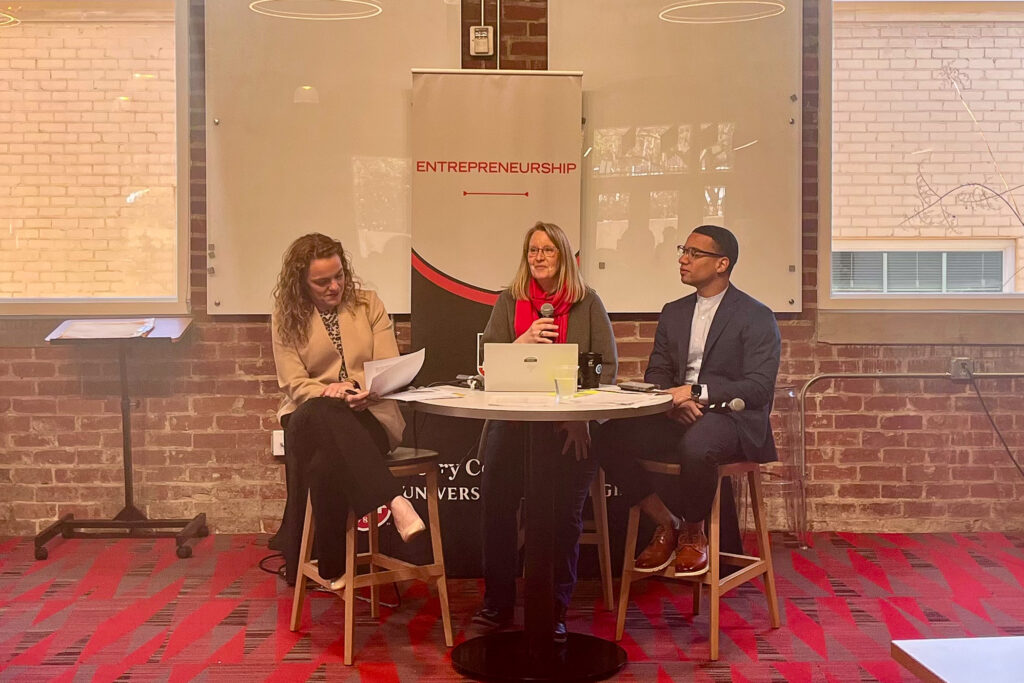More than 14 percent of teenagers in school today received an ADHD diagnosis.
Over the next 10 years, these students will head to college and then work in offices, hospitals and job sites.
Jennifer Price, assistant director of the Neuro-Diverse Centers of Excellence at EY, is working to make sure these students can excel when they get there.
Price and her colleague Terrance Griffin, also an assistant director of the Neuro-Diverse Centers of Excellence at EY, came to Terry’s Diversity Café on March 19, advocating for Universal Design for Learning principles to be included in classrooms and explain how those principles are already being adopted in workplaces.
Universal Design for Learning involves presenting material in different ways so it is accessible to students with learning differences or disabilities without having to ask for special accommodations. Examples can be as high-tech as providing real-time close captioning during lectures or as simple as supplying slides and lecture notes before lectures.
In the workplace, it means having open access to screen reading programs or sensory rooms so people can do their best work without disclosing a learning difference or disability.
“Developing inclusive workplaces and classrooms is about working smarter, not harder — because that’s better for the bottom line,” Price told the crowd.
“I have the ability, without disclosing my disability, to say I will respond faster to you if you put that in writing to me,” Price said. “We are about efficiency. We are about being able to get our invoices paid, right? So, if we want efficiency, we communicate in ways that respect someone when they say my communication preferences are x — because it is faster, because it is efficient.”
Price, who was diagnosed with ADHD and a sensory processing disorder as an adult, spent her career exploring her strengths and leveraging success enablement routines that helped her perform as a program manager at various tech and financial firms.
Today, she works with neurodivergent employees so they can define their thrive zone at work. She works with engagement teams to ensure their operations are welcoming to their neurotypical and neurodivergent employees.
Griffin, a captain in the U.S. Army Reserves, a former technology consulting manager for Accenture and a high-achieving college student, was also diagnosed with ADHD as an adult.
He has been successful in his education and career, but everything would have been much easier if he had known earlier how to ask for what he needed from professors and employers.
“To be honest, I was successful in college through brute force,” Griffin said. “Other people told me to try harder, and I did everything I possibly could. And it was probably a lot more effort than I needed to put forward and more work than if I had had more knowledge about myself.”
Griffin and Price urged students to take time to get to know themselves, how they process information, and how to ask for what they need while in school so they’re ready when they get to the workplace.

